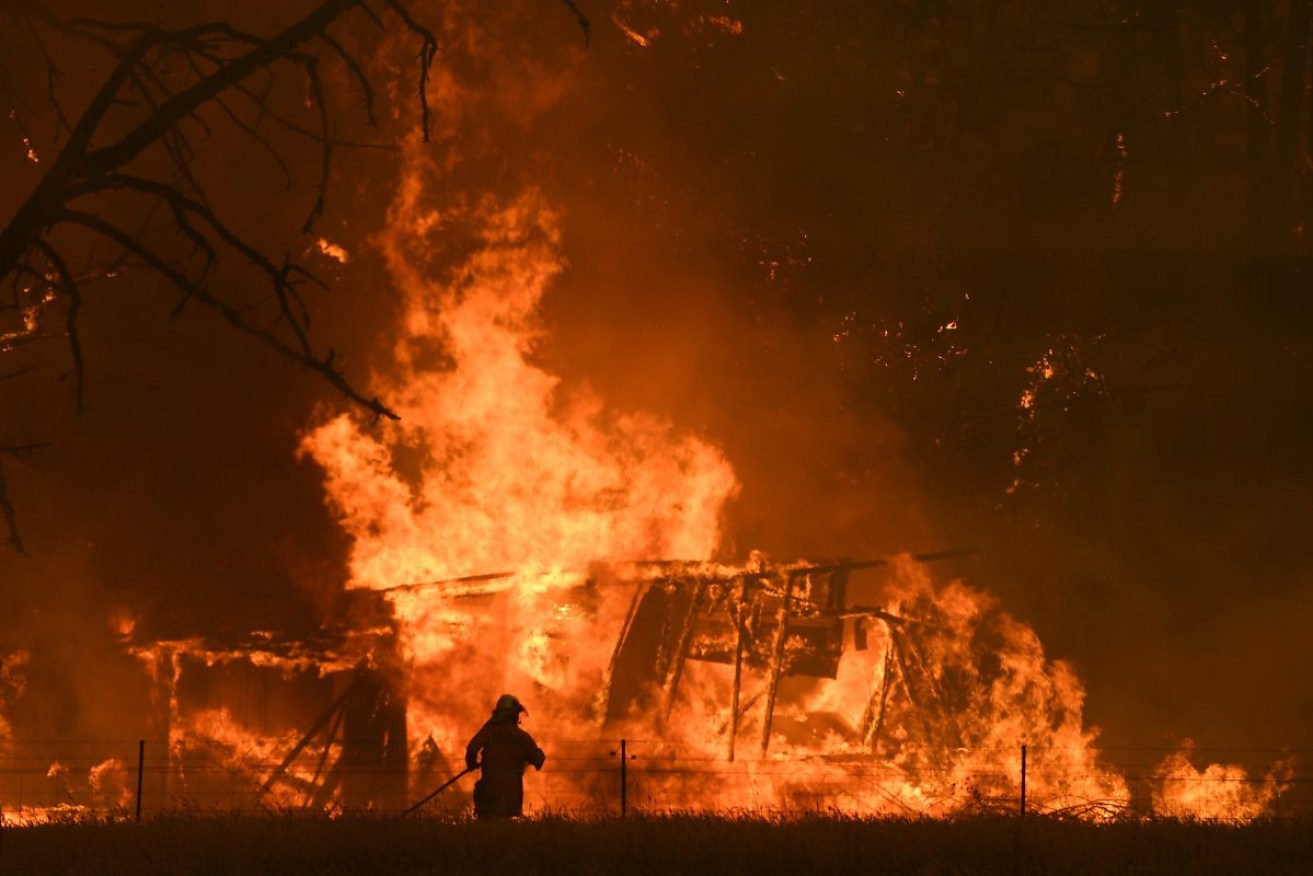Bushfires warning after La Nina ends
Australia could be set for large scale grassfires after three years of wet conditions left the nation loaded with fuel, says a new study which said previous weather patterns since 1950 were followed by bushfires.

Photo: AAP/Dan Himbrechts
The analysis looked at what happened after the nation experienced previous prolonged periods of cooler, wetter La Nina conditions.
There have only been three since 1950: 1954-57, 1973-76 and 1998-2001.
When all three ended, big, deadly fires ensued, particularly on the east coast and especially in NSW.
Former NSW Fire and Rescue commissioner Greg Mullins has no doubt the three years of La Nina conditions that have just passed will end the same way.
With a rapid snap back to hot and try conditions, that quickly dries out the prolific amount of vegetation the wet period generated.
“I’m not a gambler but I reckon three out of three means it’ll probably be four out of four,” he says.
“It just seems to snap back to hot and dry after a triple La Nina. And when that happens, the grass or young scrub all dies. And then it just explodes.”
Mullins so-authored the analysis, published on Wednesday by the Climate Council and Emergency Leaders for Climate Action.
It says the prolonged La Nina period has seen fire fuel loads jump from a normal range of 0.5 to 1.5 tonnes per hectare to between 4.5 and 6.0 tonnes now.
And NSW and Queensland have already seen grassfires this summer.
“There is an increased risk of major grassfires breaking out during periods of hot weather in Queensland, NSW, Victoria, South Australia and Western Australia up to and possibly including April 2023,” the analysis says.
“Firefighters will also watch the NT closely in winter, as there is a precedent for post-La Nina grassfires to start there in July.”
The analysis recounts how 15 per cent of Australia’s landmass burned in 1974/75 after a triple La Nina.
They were the most widespread grassfires in the nation’s history.
“Since then, climate change has worsened and is intensifying extreme weather,” it says.
“Because of this, firefighters fear that extensive grassfires that break out in hotter, drier, windier weather conditions than those experienced in 1974/75 could be far more destructive and deadly, like those experienced in the United States in December 2021.”
Mullins says what happened in Colorado that year was a horrifying example of what a climate change-driven grassfire can do.
The blaze, in midwinter December, drove tens of thousands of residents from their homes. Hurricane-force winds prevented firefighting aircraft from joining the battle. Crews on the ground were overrun.
And 1100 home were lost in a single afternoon. The next day, it snowed.
Mullins says emergency services and authorities that manage the land need more funding to respond to escalating disasters, and there must be a shift towards long-term diaster recovery efforts.
-with AAP




